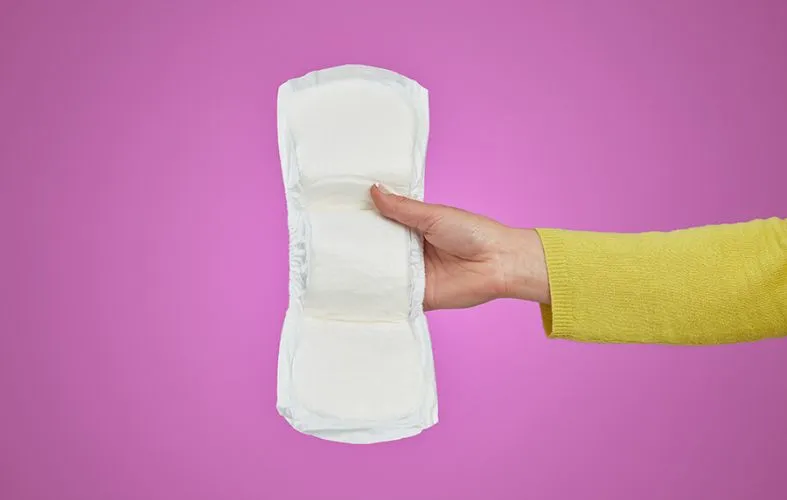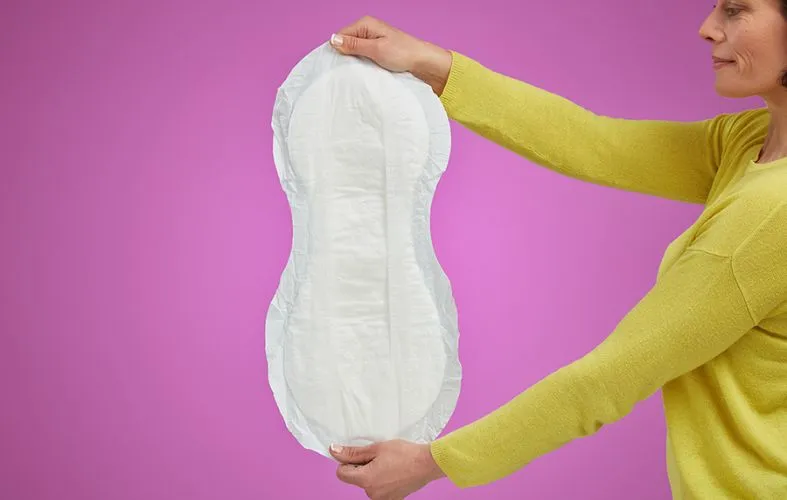
Share this page with friends
How do I know if my incontinence pad is the right size?
Making sure your disposable incontinence pads are the right size is really important for ensuring you get the most out of your product. It’s not uncommon for people to just buy any old size and hope for the best. Short term, this might be ok. But, long term? You’re going to run into some problems, so it’s best to get them ironed out early on.
‘Are my incontinence pads the right size?’ is one of the most frequently asked questions by adults who wear products for urinary incontinence. New users are particularly likely to find themselves in a pickle, but don’t worry, we’re here to help.
Here at Vivactive, you will find an extensive range of incontinence pads across many designs and sizes. Here’s how to be sure that you have the best product for managing your bladder weakness.
What happens if my incontinence pad is the wrong size?
Incorrectly sized pads can cause all kinds of issues. If they’re too big, issues. If they’re too small, issues. You need to get yourself into those pads that are the perfect size. But, how?
Try a few different sizes! If you think you might be in the wrong size, next time you stock up, buy a pair that’s a size up, and a pair that’s a size down. I know it might cost you a bit extra, but if you find they fit better, it’ll save you some money in the long run, and improve your quality of life.
Wearing ill-fitting incontinence pads may limit their performance, cause skin irritation, restrict your range of movement, lead to odours becoming more prevalent, and cause an increase in anxiety. In short, making the right choice definitely matters.
As well as selecting the right size, you must consider the absorption capacity of your incontinence pad. If it is too thin, leakages can happen. Conversely, if it’s too thick, there's the possibility of chafing (nobody wants chafing, nobody).

What happens if my incontinence pads are too big?
We find this happens a lot. People think they’re bigger than they are and opt for the larger sizes. They put them on, and, boom! They’re in the wrong size. If you’re wearing pads that are too big, you might find:
A poor fit: A pad that is too large may not fit your body properly, leading to discomfort and potential leakage.
Ineffective security: If the pad is too big, it may leave gaps in places. This will mean they’re not able to effectively contain urine, leading to leaks and accidents.
Chafe: Oversized pads can cause chafing and irritation when they rub against the skin.
Visible Bulk: Large pads may be visible under clothing. If you’re trying to remain discreet, you might find it more difficult if they’re too big.
To avoid these problems, it's important you choose a size that fits your body properly. You may need to try different sizes or styles to find the one that offers the best fit and protection for your needs.
What happens if my incontinence pads are too small?
Disposable incontinence pads that are too small can cause problems too.
Insufficient coverage: A pad that is too small may not be wide enough to collect up the liquid effectively, leading to leaks.
Limited absorption: Smaller pads may have a lower capacity for absorbing urine, resulting in more frequent changes or again, leakage.
Ineffectiveness: Small pads, if not fastened correctly, may not stay in place properly, leading to shifting and potential leakage.
How do you keep incontinence pads in place
Choose the right underwear
The foundation of a secure pad is your underwear! Opt for snug-fitting underwear that offers good support. Loose underwear or styles with flimsy elastic can cause the pad to shift and move throughout the day, increasing the risk of leaks and discomfort.
For even better security, consider investing in specially designed incontinence underwear. This type of underwear often has built-in pockets or panels to hold pads firmly in place, minimising movement and maximising comfort. They can also provide extra absorbency for added peace of mind.
Position the pad correctly
It might sound obvious, but ensuring your pad is positioned correctly is crucial. Centre the pad in your underwear, making sure it sits comfortably between your legs and aligns with your body's contours. A poorly positioned pad is more likely to move or bunch up, leading to discomfort and potential leaks. Take a moment to adjust the pad until it feels secure and comfortable before getting dressed.
Fasten the adhesive tabs
Many incontinence pads feature adhesive tabs or strips that attach directly to your underwear. These tabs are designed to keep the pad securely in place, preventing it from shifting or moving during daily activities. When applying your pad, make sure to peel off the backing from the adhesive strips and press them firmly onto the fabric of your underwear. Smooth out any wrinkles or creases to ensure a strong hold.
Consider your body shape and activity levels
Everyone's body is different, and your activity level can also influence how well your pad stays in place. If you have a particularly active lifestyle or a unique body shape, you might need additional support to keep your pad secure.
Consider using support garments, such as compression shorts or high-waisted briefs, to provide extra hold and prevent the pad from shifting during movement. Some individuals also benefit from using specially designed belts or wraps that offer additional support and security.
How to choose the right sized incontinence pads
Choosing the right size pad can feel like a bit of a minefield, but don't worry, we're here to help you navigate it! Here's how to find your perfect fit:
Check the sizing charts
One of the perks of online shopping is access to detailed product information. Most online retailers provide comprehensive sizing charts and measurements on their product pages. You'll find specifics like length, front and rear width, and absorbency levels, giving you all the information you need to make an informed choice.
Remember that sizing can vary significantly between brands. A medium in one brand might be completely different from a medium in another. Always double-check those measurements against your own before hitting that "buy now" button.
Consider your needs
Think about your lifestyle and the level of absorbency you require. Do you need a pad for light leaks or heavier incontinence? Will you be wearing it during the day or overnight?
Different pads are designed for different needs. Some are thin and discreet for everyday use, while others offer maximum absorbency for heavier flow or overnight protection. Consider factors like your activity level, the frequency of changes, and your personal preferences when selecting the right pad for you.
Explore different brands and styles
The beauty of online shopping is the sheer variety of products available at your fingertips. Take your time to browse different brands and styles of incontinence pads. You might discover a brand you love that you wouldn't have found in your local supermarket.
Online retailers often offer a wider range of products, including specialist items that cater to specific needs.
Don't be afraid to experiment
Finding the perfect pad might involve a bit of trial and error. Don't be afraid to try different sizes and styles until you find what works best for you.
How to measure for incontinence pads
To ensure a snug fit, you'll need to measure your waist and hips.
- Waist: Use a tape measure around the narrowest part of your waist, typically just above your belly button.
- Hips: Measure around the fullest part of your hips.
Once you have these measurements, check the sizing chart on the incontinence pad's packaging or product page. Each brand may vary, so always double-check those measurements so that they fit perfectly. Don't just rely on your usual clothing size!

How to tell if you’re wearing the wrong size pad
Knowing how to fit your incontinence pads (or pants/nappies) should prevent several potential problems to improve both performance and comfort. Nevertheless, there are several signs that indicate you need to change sizes. They include:
- Leaks and spillages, particularly out of the sides.
- Discomfort around the groin and genital region.
- Skin chafing.
- Reduced mobility and discomfort when walking.
Millions of adults in the UK are affected by urinary incontinence but many people decide against wearing incontinence pads due to discomfort. By addressing the issue of sizing with the help of Incontinence Choice’s helpful experts, you can finally reap the rewards of managing your bladder weakness once and for all.
Browse incontinence pads today
Now you know how to measure for incontinence pads, you can browse our online store to find the right fit for you. We have a range of incontinence pads available from many different brands, all offering unique features to help support you with incontinence day-to-day.





